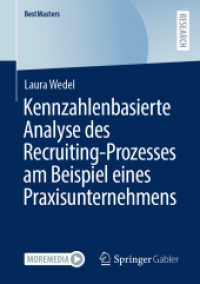Full Description
This innovative work combines traditional analysis with modern corpus-based methods to explore macro- and micro-level linguistic patterns in English and Chinese, offering new insights into comparative studies of the two languages.
Through detailed analysis of part-of-speech sequences, prepositional functions, pragmatic markers, and several other aspects, this volume uncovers key similarities and differences between English and Chinese. By integrating quantitative and qualitative methods with large-scale linguistic data, the book pushes the boundaries of contrastive linguistics, bridges cultural and linguistic divides, and deepens our understanding of how the two languages function and interact.
This book will serve as a valuable resource for researchers and students interested in contrastive linguistics and the intersection of language, technology, and culture. It will also be essential reading for educators and practitioners in language teaching and translation.
Contents
Introduction 1. Contrastive Linguistics: Contents, Issues, and Methods 2. Macroscopic Description of English and Chinese Language Features 3. An Analysis of Part-of-Speech Sequences in Mandarin Chinese and English 4. An Analysis of Prepositions in Mandarin Chinese and English 5. Reference Categories in English and Mandarin Chinese 6. Formation of Sentence Segments in English and Mandarin Chinese 7. Encoding of Events in English and Mandarin Chinese 8. Realizations of Pragmatic Markers in Mandarin Chinese and English 9. Prospects for Contrastive Studies








